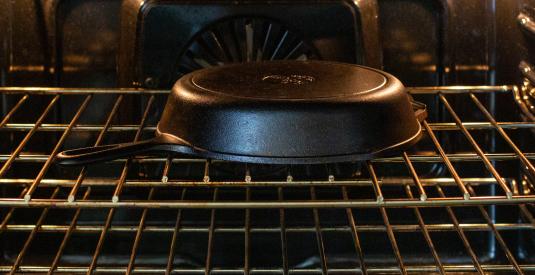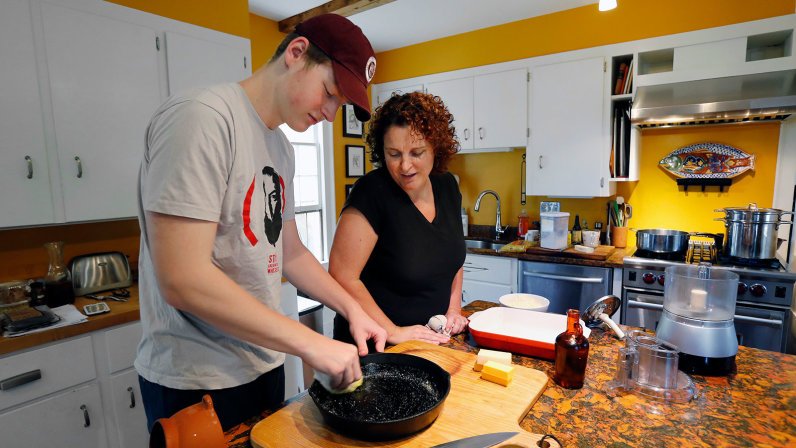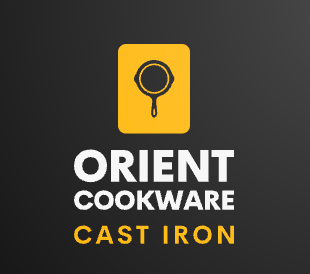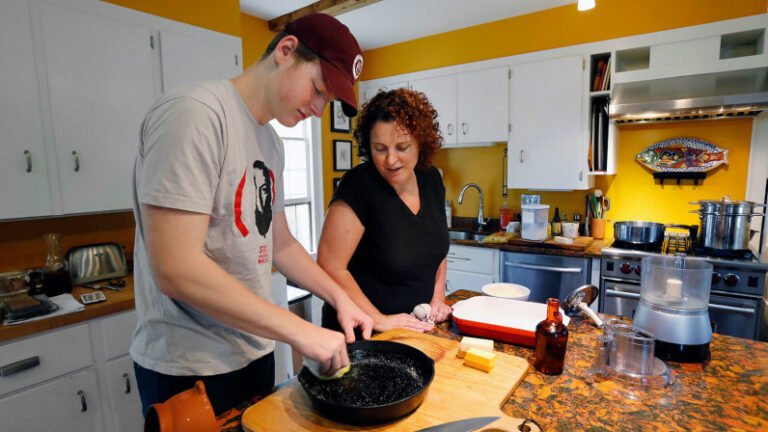Cast Iron Benefits
- Cast iron is an excellent heat conductor so you get a very even heat throughout the pan
- Cast iron skillets can withstand both stovetop and oven cooking
- Once properly seasoned, cast iron skillets are easy to clean and maintain
- If properly cared for, they will last a lifetime and some!
- They are inexpensive, especially considering for how long they last
- Cast iron will actually transfer iron into the food you are cooking, so anything you cook on cast iron will get a boost of iron!
- They are a completely non-toxic cookware option
Non-Toxic Cooking
I want to dive a bit more into this topic before moving on, as it’s very important! Cooking with cast iron is an excellent option that does not expose your food to any harmful chemicals, like pots and pans that have non-stick coatings. Non-stick cooking surfaces use a chemical called perfluorooctanoic acid (PFOA, also known as C8) to create a frictionless surface. The major downside to this convenient cooking surface is that this chemical has been linked to causing cancer. I recently watched a movie called Dark Waters (based on the documentary The Devil We Know) all about DuPont, C8, and how this dangerous chemical was used despite the known risks – I highly recommend watching if you are not sold on tossing your non-stick cookware.
Cast Iron: How to Season
Let’s talk about seasoning. Seasoning your cast iron is a process of coating it in fat and baking it at a high temperature to essentially create a seal, which in turn creates a naturally non-stick surface. Before diving into the cast iron world, I found this step intimidating – it sounded like a lot of work and upkeep so it kept me from taking the plunge. But that’s so not true! I season my pans one time as soon as I receive them, and then I typically don’t have to season them again. If you think about it, I cook with my skillets (and therefore fat) daily, so they basically get re-seasoned daily. And the more you use your cast iron skillets, the smoother and more slick they will get over time!
- To season your skillet, start by coating it completely with your fat of choice. I used coconut oil, and applied a generous amount all over with a towel – inside the pan, outside the pan, and the handle.
- Next, place your skillet in the oven and bake at 450 for 1 hour.
- Repeat process if necessary. You are looking for a shiny ‘patina’ surface, if you’ve achieved that you are ready to start cooking! If it’s a brand new pan, seasoning once or twice should suffice. If it’s an older pan, it may require a few rounds of seasoning.

Cast Iron: Naturally Non-Stick
Now I know what you may be thinking…it’s so much easier to cook with non-stick and switching to cast iron will be a hassle (at least that’s what I thought). But actually, that’s not true at all! Cast iron can be naturally non-stick and perform beautifully if you follow a couple simple rules. For example, I cook fried eggs and scrambled eggs on my cast iron skillet all the time and they never stick! Once you get the hang of it, you will not even miss your non-stick pans!
- Preheat your cast iron skillet. This step is critical! Your pan must be nice and hot before you start cooking, or else your food will likely stick. Usually once butter is sizzling, or oil can flow quickly around the pan, it’s preheated.
- Use a good amount of fat. This is also critical! You need a thin layer of fat between the seasoned cast iron and the food in order to keep it slick. Butter, coconut oil, and avocado oil are my go-to’s.
If you follow these two rules, you shouldn’t have issues with your food sticking. I’m telling you, you will be a convert!
Cast Iron: How to Clean

Now let’s discuss how to clean your cast iron skillet. Before owning cast iron myself, I thought cast iron was super high maintenance because I knew you couldn’t clean it with soap. This is important – do not let soap get on your cast iron! Soap will remove the oil on the pan (and therefore seasoning) which we do not want. Much of the time, while my skillet is still hot I can just wipe it out with a paper towel to clean it – no water or scrubbing necessary (and whatever fat is left behind just goes toward seasoning my pan more!). If there are little bits behind that I can’t just wipe out, I will give it a little scrub in my sink (no soap remember!) with the ‘scrub’ side of a sponge. Then I make sure to dry it completely before storing as water can cause rust on your cast iron.



One Response
You need to take part in a contest for one of the most useful blogs on the web. I most certainly will recommend this website!